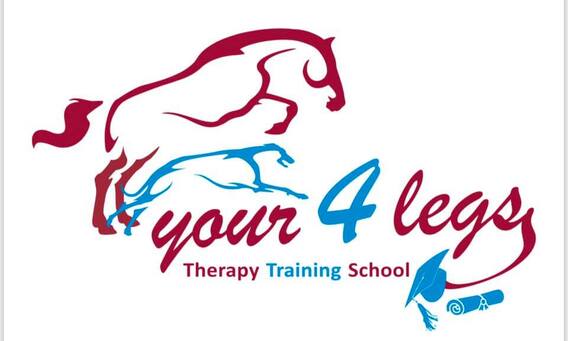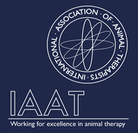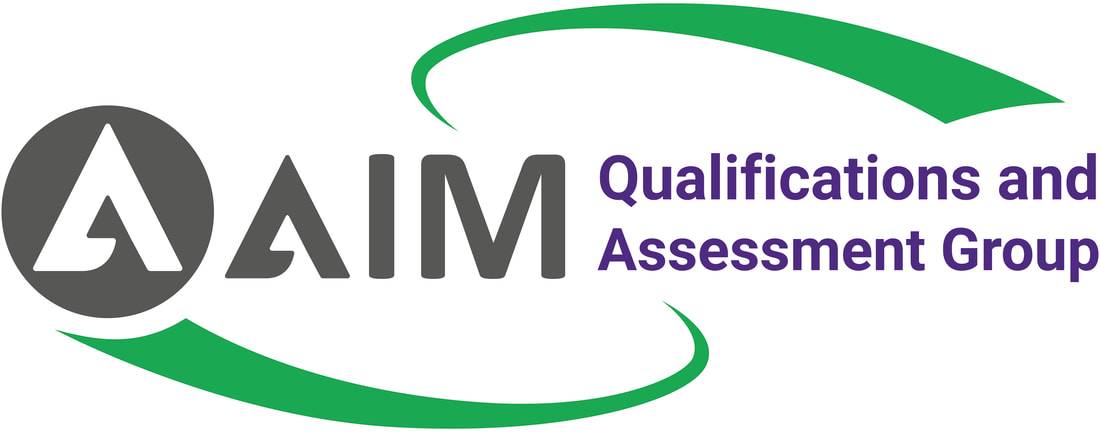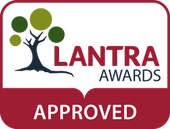Course accreditation and approval
This course can support both career prospects and educational progression routes.
The course is accredited by LANTRA as a customised provision provider. LANTRA is Recognised by Ofqual, the SQA (Scottish Qualifications Authority) and Qualification Wales.
Your4legs Therapy Training School has recently been approved as a recognised provider by AIM Qualifications and Assessment Group. AIM are a leading Awarding (AO) and End-Point Assessment Organisation (EPAO), offering award winning qualifications and nominated end-point assessment services. AIM is regulated by the public regulator governing qualifications in England - Ofqual.
The courses are recognised by the IAAT (International Association of Animal Therapists) as acceptable for both student and practitioner association membership.
The your4legs courses and the training school are fully insured through Holistic Insurance Services.
This course can support both career prospects and educational progression routes.
The course is accredited by LANTRA as a customised provision provider. LANTRA is Recognised by Ofqual, the SQA (Scottish Qualifications Authority) and Qualification Wales.
Your4legs Therapy Training School has recently been approved as a recognised provider by AIM Qualifications and Assessment Group. AIM are a leading Awarding (AO) and End-Point Assessment Organisation (EPAO), offering award winning qualifications and nominated end-point assessment services. AIM is regulated by the public regulator governing qualifications in England - Ofqual.
The courses are recognised by the IAAT (International Association of Animal Therapists) as acceptable for both student and practitioner association membership.
The your4legs courses and the training school are fully insured through Holistic Insurance Services.
Canine Physiotherapy Practitioner Course
Physiotherapy “can be defined as the treatment of pain, disease, or injury by physical means.” It can also “be defined as the profession concerned with promotion of health, with prevention of physical disabilities, with evaluation and rehabilitation of persons disabled by pain, disease, or injury, and with treatment by physical therapeutic measures as opposed to medical, surgical, or radiologic measures.” (Farlex Partner Medical Dictionary © Farlex 2012)
A key purpose of physiotherapy is to restore mobility, function and quality of life to patients through stimulation of the healing process to restore injured tissues and improve strength and balance and to stabilize body systems – such as neurological and musculoskeletal.
The canine physiotherapy course aims to give you the knowledge, confidence and clinical reasoning skills enabling you to become a safe, competent and professional canine physiotherapist, with an in-depth knowledge of both therapy and rehabilitation techniques, together with the use of additional physiotherapeutic devices and exercise tools to compliment canine recovery and maintenance. You will also learn how to work confidently in conjunction with the veterinarian and the client for both rehabilitation referrals and ongoing maintenance therapy.
This course will give you the relevant training in 13 different canine anatomy systems, the fundamentals of therapy and the therapy process, together with a comprehensive range of therapy and rehabilitation techniques encompassing –
· Both light and deep tissue massage
· Rehabilitation techniques including –
o joint mobilization and increasing joint range of motion
o Rehabilitation exercises and the use of exercise tools to help improve and maintain balance, muscle strength and
proprioception
o The use of additional physiotherapeutic devices such as ultrasound and laser therapy
· Massage techniques adapted to warm up the dogs’ muscles in preparation for exercise and cool down the muscles after
exercise
· Light touch techniques (LTR) and soft tissue rolling (adapted by your4legs) related to trigger point and fascia release.
Work experience is essential as part of the canine physiotherapy training program –
It is likely to be voluntary and the chosen venue may have an insurance policy that limits the amount of involvement the student can have, but it is an opportunity to watch people – whether they are therapists, vets or nurses – through their daily work. It is also important to ask questions to learn and be involved as much as possible.
Protected words -
In the field of human therapy the term “Physiotherapist” is protected, but this term not protected in the animal sector. Using the prefix “canine” clearly indicates there is no intention to treat humans as a physiotherapist.
There is currently no official register for animal related physiotherapists. A therapist who has completed a physiotherapy course related to animals will be registered or regulated with their own association(s), which is similar for many animal therapy courses. Chartered physiotherapists are registered in their capacity as a human physiotherapist and not as an animal physiotherapist.
All animal physiotherapy is carried out under veterinary referral and your4legs will happily provide evidence of the detailed training a physiotherapy student must undertake if requested by a veterinary practise. Your4legs will continue to add and amend courses to ensure that all training is maintained to the best standard possible.
Treatment in the early stages after injury or loss of performance is essential for quick and full recovery. Canine Physiotherapy techniques can effectively help with many musculoskeletal problems, including -
· Performance and behaviour changes that may be an indication of discomfort -
o Changes to the dogs’ ability to play / work due to the appearance of stiffness in movement and a reluctance to move
generally.
o Whining or yelping when getting up, jumping up or when initially lying down
o A reluctance to be touched in certain places which were previously not sensitive
o Panting and restlessness when normally the dog is quiet and relaxed – which may be an indication of pain, especially
when the behaviour starts to occur after work or play.
· Muscle, tendon and ligament injury and post-operative rehabilitation after surgery to help ensure correct strength, balance
and proprioception (within the physical capabilities of the dog) and to help reduce the formation of scar tissue.
· Maintenance therapy to help maintain health and wellbeing for dogs, including those with conditions and illnesses that may
be breed or age related, or due to wear and tear.
Some of the most common areas where therapy can be used are:
· Enhancement of quality of life for dogs with degenerative conditions such as arthritis, where therapy can be used to help slow the condition and manage soft tissue tensions arising from compensation.
· Performance enhancement and treatment of musculoskeletal injuries in the working or competition dog.
· Post-operative rehabilitation for dogs with orthopaedic or neurological conditions.
Some of the conditions that can be helped by Remedial Massage and Rehabilitation Therapy:
· Sore/bruised muscles
· Muscle and tendon strain and tension
· Muscle asymmetry
· Injury to tendons and ligaments of the legs and joints
· Help to optimise post-operative repair
· Help to ease pain in arthritic and diseased joints and slow down further degeneration
· Improving and maintaining range of movement and muscle tone
· Assist wound repair to minimise scarring and proud flesh
· Routine checks and maintenance
A key purpose of physiotherapy is to restore mobility, function and quality of life to patients through stimulation of the healing process to restore injured tissues and improve strength and balance and to stabilize body systems – such as neurological and musculoskeletal.
The canine physiotherapy course aims to give you the knowledge, confidence and clinical reasoning skills enabling you to become a safe, competent and professional canine physiotherapist, with an in-depth knowledge of both therapy and rehabilitation techniques, together with the use of additional physiotherapeutic devices and exercise tools to compliment canine recovery and maintenance. You will also learn how to work confidently in conjunction with the veterinarian and the client for both rehabilitation referrals and ongoing maintenance therapy.
This course will give you the relevant training in 13 different canine anatomy systems, the fundamentals of therapy and the therapy process, together with a comprehensive range of therapy and rehabilitation techniques encompassing –
· Both light and deep tissue massage
· Rehabilitation techniques including –
o joint mobilization and increasing joint range of motion
o Rehabilitation exercises and the use of exercise tools to help improve and maintain balance, muscle strength and
proprioception
o The use of additional physiotherapeutic devices such as ultrasound and laser therapy
· Massage techniques adapted to warm up the dogs’ muscles in preparation for exercise and cool down the muscles after
exercise
· Light touch techniques (LTR) and soft tissue rolling (adapted by your4legs) related to trigger point and fascia release.
Work experience is essential as part of the canine physiotherapy training program –
It is likely to be voluntary and the chosen venue may have an insurance policy that limits the amount of involvement the student can have, but it is an opportunity to watch people – whether they are therapists, vets or nurses – through their daily work. It is also important to ask questions to learn and be involved as much as possible.
Protected words -
In the field of human therapy the term “Physiotherapist” is protected, but this term not protected in the animal sector. Using the prefix “canine” clearly indicates there is no intention to treat humans as a physiotherapist.
There is currently no official register for animal related physiotherapists. A therapist who has completed a physiotherapy course related to animals will be registered or regulated with their own association(s), which is similar for many animal therapy courses. Chartered physiotherapists are registered in their capacity as a human physiotherapist and not as an animal physiotherapist.
All animal physiotherapy is carried out under veterinary referral and your4legs will happily provide evidence of the detailed training a physiotherapy student must undertake if requested by a veterinary practise. Your4legs will continue to add and amend courses to ensure that all training is maintained to the best standard possible.
Treatment in the early stages after injury or loss of performance is essential for quick and full recovery. Canine Physiotherapy techniques can effectively help with many musculoskeletal problems, including -
· Performance and behaviour changes that may be an indication of discomfort -
o Changes to the dogs’ ability to play / work due to the appearance of stiffness in movement and a reluctance to move
generally.
o Whining or yelping when getting up, jumping up or when initially lying down
o A reluctance to be touched in certain places which were previously not sensitive
o Panting and restlessness when normally the dog is quiet and relaxed – which may be an indication of pain, especially
when the behaviour starts to occur after work or play.
· Muscle, tendon and ligament injury and post-operative rehabilitation after surgery to help ensure correct strength, balance
and proprioception (within the physical capabilities of the dog) and to help reduce the formation of scar tissue.
· Maintenance therapy to help maintain health and wellbeing for dogs, including those with conditions and illnesses that may
be breed or age related, or due to wear and tear.
Some of the most common areas where therapy can be used are:
· Enhancement of quality of life for dogs with degenerative conditions such as arthritis, where therapy can be used to help slow the condition and manage soft tissue tensions arising from compensation.
· Performance enhancement and treatment of musculoskeletal injuries in the working or competition dog.
· Post-operative rehabilitation for dogs with orthopaedic or neurological conditions.
Some of the conditions that can be helped by Remedial Massage and Rehabilitation Therapy:
· Sore/bruised muscles
· Muscle and tendon strain and tension
· Muscle asymmetry
· Injury to tendons and ligaments of the legs and joints
· Help to optimise post-operative repair
· Help to ease pain in arthritic and diseased joints and slow down further degeneration
· Improving and maintaining range of movement and muscle tone
· Assist wound repair to minimise scarring and proud flesh
· Routine checks and maintenance



